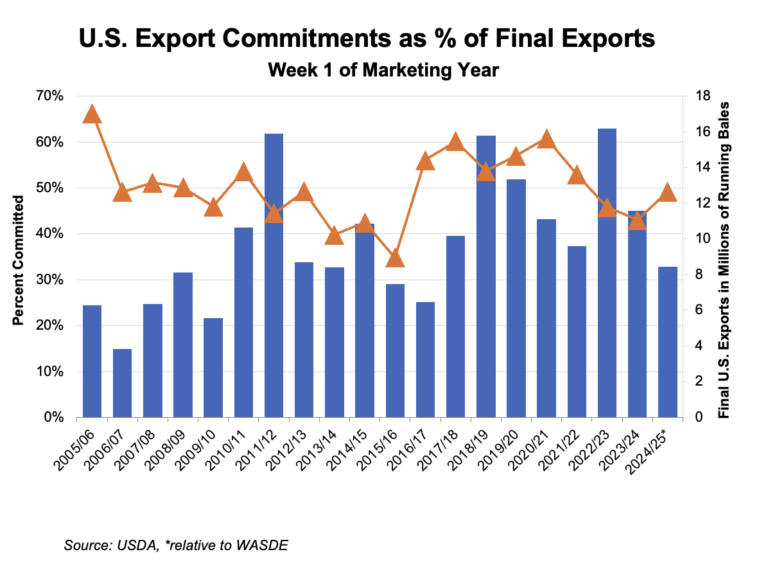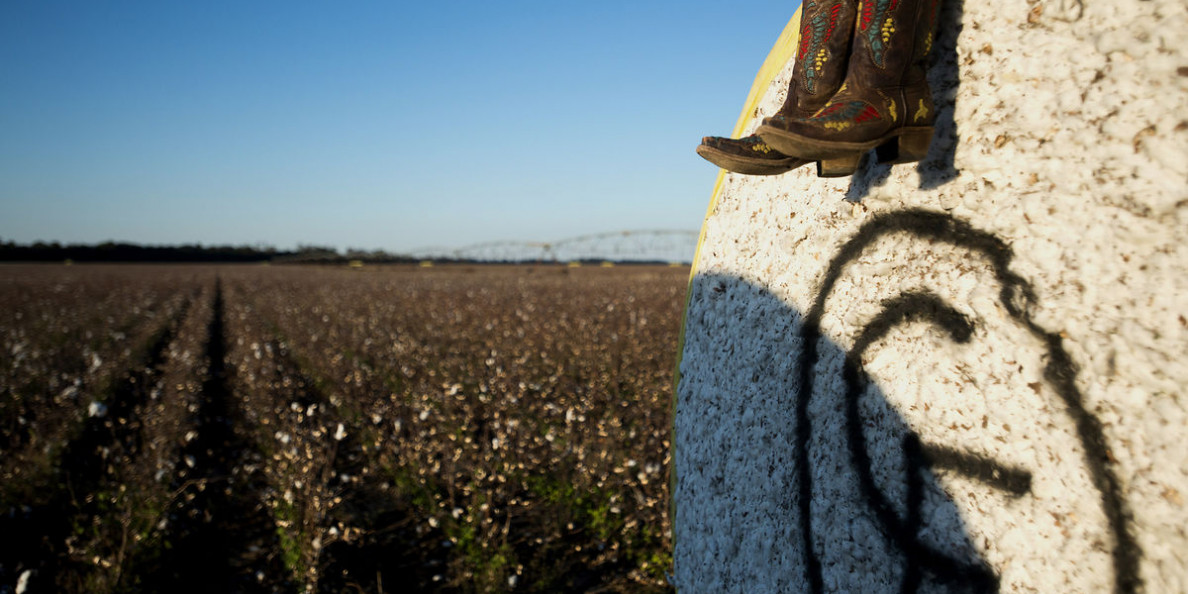Cotton Market Weekly August 9, 2024
- The December contract fell 84 points, settling at 67.24 cents per pound.
- The cotton market followed an eroding macroeconomic environment early in the week, continuing the downtrend from recent months. Bearish sentiment remains regarding the current outlook, and trend followers appear negative.
- Unrest in Bangladesh, a major cotton export market, caused the government to collapse and businesses to close. Work has since resumed as garment and textile manufacturers have orders to fill for the end-of-year holidays.
- Daily volume traded was modest this week. The total number of open contracts decreased by 4,690 to 226,657.
- Bales eligible for delivery against futures decreased to the lowest level since March of this year. 8,042 bales were decertified for delivery for the week, reducing the total certificated stock to 18,721.
On Monday, major stock indexes experienced their most significant one-day loss in almost two years but clawed back most of the losses by the end of the week.
- The jobs report released on Friday fell drastically short of expectations, sparking a massive sell-off. The U.S. economy added 114,000 jobs, while the unemployment rate rose to 4.3%, the highest level since October 2021.
- The U.S. markets are not the only market experiencing wide swings in trading this week. On Monday, the Japanese Nikkei recorded its worst day of losses since 1987 but later rebounded to record its most significant daily gain since 2008.
- The state of the global economy and political uncertainty could provide more market volatility in the coming weeks.
Late reporting of sales and shipments for the final Export Sales Report of the 2023/24 crop justified that the USDA export estimate of 11.6 million bales will be met.
- For the 2024/25 marketing year, the sales rolled last week were cancelled this week, resulting in net reductions of 946,600 Upland bales. Weak shipments of 21,600 Upland bales were reported.
- The U.S. is currently at the lowest level of commitments reported for this time of the year since 2016/17.
- Pima merchandisers sold 7,700 bales of the current crop and exported 1,700 bales.

The good to excellent condition rating for the U.S. dropped to 45%.
- The crop rated good to excellent in Texas decreased by 8% this week to 32%. Oklahoma remained at 61%, and Kansas decreased 10% to 57%.
- In the U.S., 91% of cotton is now squaring, and 60% is setting bolls.
- South Texas has received more favorable weather over the past week, a much-needed change now that harvest is in full swing. The heavy rains experienced in prior weeks have resulted in issues concerning quality and yield.
- Areas in West Texas, Oklahoma, and Kansas have reported triple-digit temperatures and very little moisture. Although the crop is slowly progressing, the heat and lack of moisture have impacted the dryland crop.
The Week Ahead
- The World Agricultural Supply and Demand Estimates (WASDE) report will be released at 11:00 am CST on Monday, August 12. NASS takes over reporting this month, meaning the August report is always a wildcard. Many analysts expect a smaller crop size to be reported based on recent weather in the Southwest.
The Seam
As of Thursday afternoon, grower offers totaled 18,233 bales. There were 1,092 bales traded on the G2B platform with an average price of 63.86 cents per lb. The average loan was 54.81 which resulted in a premium 9.05 cents per lb. over the loan.



